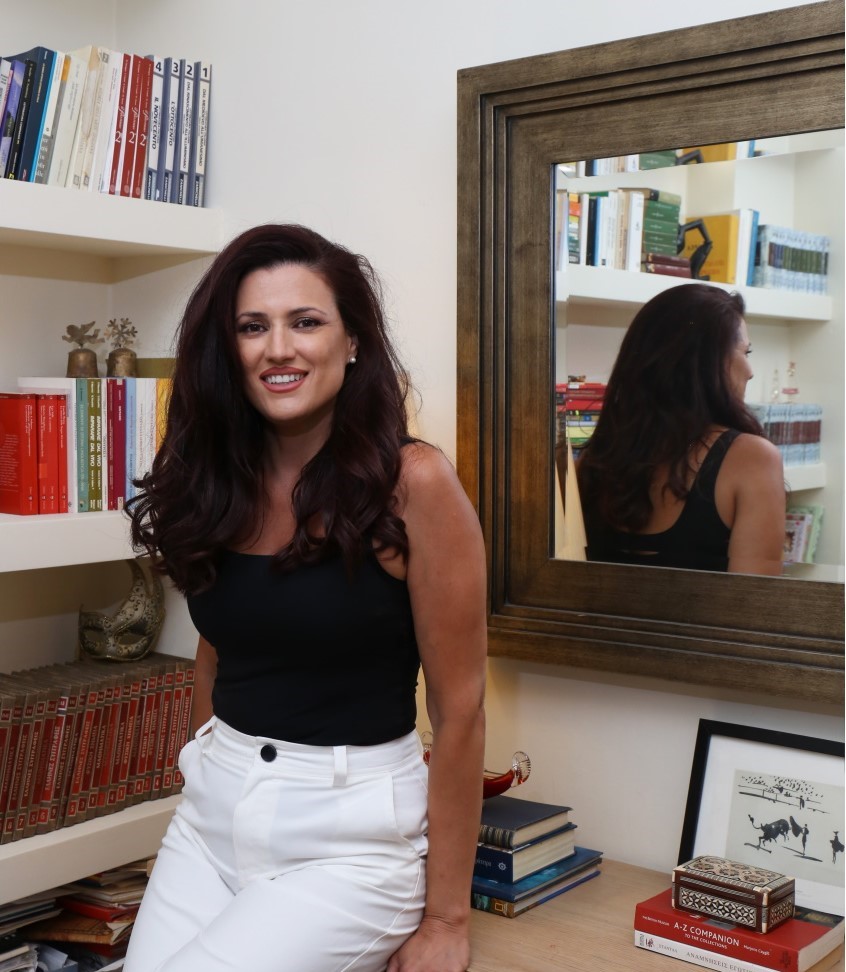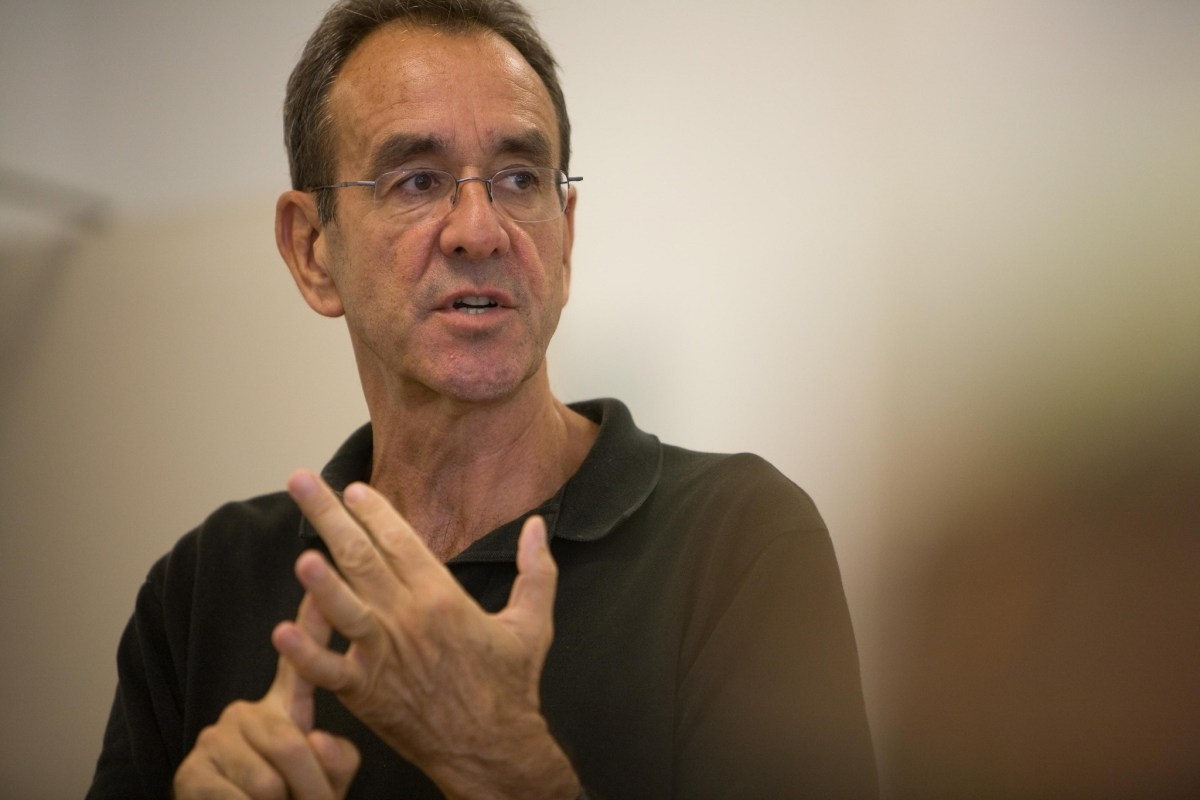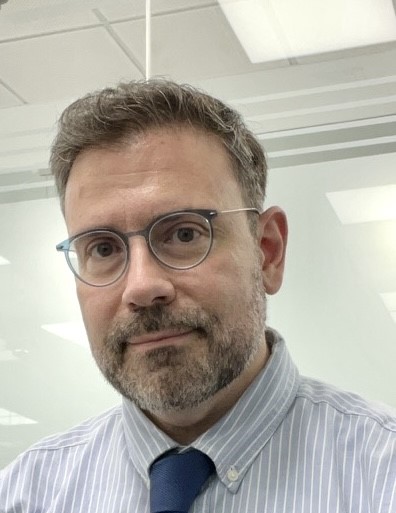Teacher of the Year Giota Kotsoni shares insights about her extensive educational journey
Giota Kotsoni is a teacher of English, a researcher and, among others, a Foreign Language School owner in Thessaloniki. She was granted the Teacher of the Year Award last June. Being recognized as Teacher of the Year is a prestigious honour awarded to an outstanding educator who has demonstrated exemplary teaching skills, dedication, and commitment to the profession and it involves the following: Excellence in Teaching, Innovation, Positive Impact on students, Contribution to the school/community, Professional Development, Advocacy for Education, to name just a few. The award serves as an inspiration to other educators and celebrates the crucial role teachers play in shaping the future.
- Can you share with us your journey as an educator and how you arrived at this point of being recognized as Teacher of the Year?
It all started twenty years ago when I founded Kotsoni Language School in Thessaloniki, marking the beginning of my journey as an educator. Over the years, my focus has been on continuous learning, research, and addressing learning difficulties and neurodiversity. I pursued two Master’s degrees, specializing in Neurolinguistics and Special Education. The excellence of my Master’s thesis propelled me towards a demanding and fulfilling PhD journey at Aristotle University. Concurrently, I managed my language school, actively participated in a European research project, I published scientific articles and books and presented my research findings in prestigious scientific conferences.
As regards the previous year, it was marked by hard work, dedicating countless hours to academic teaching, research, article writing, innovative program development, and conference presentations. At my school, I collaborated with my colleague from New York to create the world’s first Tandem Learning program for school-aged students, showcasing our commitment to cutting-edge education.
Academically, during my time at Aristotle University, I taught four courses covering various topics related to Foreign Language Teaching, Individual Differences in Foreign Language Acquisition, Specific Learning Difficulties, and Special Education in Foreign Language Learning. Additionally, I actively contributed to the research program titled “Digital Tools for Inclusive Foreign Language Education,” wherein I taught students from the School of Philosophy’s language departments. Our collaborative efforts focused on piloting and assessing program materials, significantly impacting the field of inclusive education.
Furthermore, I had the privilege of teaching at Aristotle’s summer university, where 70 students from different European universities attended innovative research program lessons delivered by 15 esteemed professors. The experience was truly enriching and inspiring, both for the students and myself.
Under the academic leadership of Professor George Ypsilandis and Penelope Kambaki-Vougioukli, our research program accomplished a remarkable feat by becoming the first Humanities program to be featured in the esteemed Akademia-Helexpo International Fair of Thessaloniki. Mr. Papaioannou, the Dean of Aristotle University, highlighted the significance of Humanities in a research landscape typically dominated by medical and engineering fields.
Additionally, I had the honor of presenting our research program to the then Minister of Education, Ms. Kerameos, where I emphasized the importance of fostering inclusive educational environments. This presentation served as a platform to advocate for the integration of diverse perspectives and approaches within the educational system.
In the field of research, I collaborated with esteemed colleagues to develop and standardize two psychometric assessment tools for Greek-speaking children. These tools focused on evaluating phonological short-term memory and reading skills, with a specific emphasis on identifying dyslexia. The research findings were published in the prestigious journal “Frontiers in Psychology,” underscoring their significance. Additionally, I had the privilege of presenting my research at numerous international scientific conferences, where I shared valuable experimental findings. Furthermore, I contributed to teacher training conferences by delivering impactful presentations. Moreover, I made significant contributions to the scholarly discourse in my field by publishing three chapters in scientific books and two articles in scientific journals.
Reflecting on the past academic year, I can confidently say it was a challenging yet immensely fulfilling journey. Throughout my career as an educator, I have remained dedicated to continuous learning and fostering inclusivity for students with diverse needs. I am grateful for the recognition I have received, and it fuels my determination to continue making a positive impact on students’ lives while contributing to the field of education.
- What teaching strategies or approaches do you find most effective in engaging and inspiring your students?
To effectively engage and inspire students, I firmly believe in the importance of creating a positive, nurturing, and inclusive learning environment. When students feel valued, supported, loved, and accepted, their confidence and self-esteem flourish, resulting in heightened motivation, active participation, and a sincere thirst for knowledge. Embracing active learning techniques, such as interactive discussions and group projects, along with differentiating instruction to cater to individual needs, incorporating technology, establishing real-world connections, fostering inquiry-based learning, providing personalized feedback, and nurturing positive teacher-student relationships all play pivotal roles in promoting student engagement and inspiration. These strategies empower students to take ownership of their learning journey and cultivate an authentic passion for knowledge within an atmosphere of love and acceptance.
- How is inclusion defined in simple terms?
Inclusion in the foreign language classroom extends far beyond a simple definition and necessitates thoughtful and deliberate implementation. It encompasses a comprehensive approach to fostering an environment that embraces diversity and ensures equitable access to learning for every student. While the concept of inclusion was initially associated with catering to students with special needs, its scope has expanded to encompass various dimensions, including neurodiversity, cultural and racial diversity, minority language diversities, religious diversity, and students from diverse economic backgrounds.
True inclusion surpasses mere physical presence; it involves creating a classroom atmosphere where all students can thrive and effectively learn. Achieving this requires teachers to apply and implement appropriate evidence-based methodologies and practices that cater to the diverse learning needs of every student. In the foreign language classroom, inclusion entails establishing an environment that recognizes and addresses the unique requirements of all students, promoting their effective learning, and nurturing a sense of inclusivity, respect, and belonging.
- Can you describe a memorable moment or success story that highlights the impact you’ve had on your students’ lives?
I would like to share a cherished and deeply emotional moment that continues to resonate with me. It occurred when one of my students with Autism embraced me and said, “Miss Giota, you are the best thing that has ever happened in my life.” These words serve as a powerful testament to the profound impact that teachers can have on their students. This touching moment remains a constant reminder of the significance of cultivating a nurturing and inclusive environment where every student feels valued, supported, and empowered to thrive. It reinforces my commitment to ongoing research in the field and strengthens my resolve to make a positive and lasting difference in the lives of my students.
- How do you differentiate instruction to meet the diverse needs and learning styles of your students?
I am delighted to share that I recently published a chapter in a scientific book on differentiated instruction in the foreign language classroom. My chapter underscores the significance of an inclusive foreign language classroom in cultivating a sense of belonging and respect among students. By embracing inclusivity, we can create an environment that encourages open dialogue, celebrates cultural and linguistic diversity, as well as neurodiversity, and ensures that students feel valued and supported.
In an inclusive foreign language classroom, I begin by recognizing and embracing the unique abilities, backgrounds, needs, interests, and learning styles of each student. To accommodate different learning preferences and abilities, I employ a variety of teaching strategies, instructional materials, and assessment methods. This may involve incorporating multi-modal teaching techniques, providing differentiated instruction, offering scaffolding and support, and promoting collaborative learning opportunities.
It is crucial to remember that inclusion in the foreign language classroom involves creating an environment that acknowledges and addresses the diverse needs of all students, promoting their effective learning, and cultivating a sense of inclusivity, respect, and belonging.
- In your opinion, what role does technology play in enhancing the teaching and learning experience in today’s classrooms?
Technology plays an indispensable and prominent role in today’s foreign language classrooms, as in all educational settings. One cannot overlook the profound impact of the internet, which grants students and teachers immediate access to a wealth of knowledge, information, and authentic materials, thereby revolutionizing the methods of language instruction and learning. The constant influx of innovative equipment, mobile devices, online platforms, augmented and virtual reality, and numerous applications in classrooms is continuously expanding the horizons of possibilities bringing effectively the world into our classrooms, and fostering immersive and dynamic learning experiences. It is worth noting that ChatGPT, as an emerging technological breakthrough, carries both potential benefits and unforeseen consequences that require careful evaluation in the near future. While it undoubtedly serves as a valuable tool, it should never replace the fundamental elements of creative and critical thinking, as well as human interaction and engagement in the educational process with its role remaining to be supportive, assisting teachers and learners in fostering inclusive environments and ensuring they are employed wisely, within a child-centered pedagogy that prioritizes the needs and growth of each individual learner. For students facing learning difficulties, these devices and applications provide valuable support, contributing to engaging and inclusive learning environments. This aligns with the main goal of the research program I am participating which combines inclusion with digital tools and recognizes the important role of technology in supporting students with difficulties.
- How do you foster collaboration and cooperation among your students, and why do you believe it’s important in their educational development?
Fostering collaboration, cooperation, and embracing diversity are crucial aspects of students’ educational development. To achieve this, I prioritize creating an inclusive environment where students feel respected, appreciated, and celebrated for their unique backgrounds, abilities, and difficulties. I educate students about the importance of diversity and its positive impact on their educational experience, helping them appreciate and embrace the richness it brings to the learning environment.
To further encourage collaboration and cooperation, I incorporate cooperative learning structures into my teaching methods. I assign group tasks, pair work, peer learning activities, class discussions, and collaborative projects that require students to work together towards common goals. Through these activities, students learn to collaborate, share responsibilities, and support each other’s learning. This fosters a culture of open communication where students appreciate and respect diverse perspectives.
Incorporating diverse perspectives is a key component of my teaching approach. I expose students to different cultures, backgrounds, abilities, and ideas, ensuring they understand the value of diverse viewpoints. I promote a positive classroom culture by emphasizing a sense of belonging, open communication, active listening, and respectful interaction among students.
By embracing diversity and promoting collaboration and cooperation, I create an environment where students can learn from one another, develop empathy, critical thinking, and problem-solving skills, and become well-prepared for a diverse and interconnected world.
- What steps do you take to continuously improve your teaching practice and stay updated with the latest educational research and trends?
When it comes to continuously improving my teaching practice and staying updated with the latest educational research and trends, I believe in following a systematic and evidence-based approach. I adhere to a straightforward and clear set of steps that are essential for any dedicated teacher and scientist.
Firstly, I prioritize studying the latest bibliography, particularly scientific research articles that highlight effective practices in the classroom. I carefully evaluate the findings of these articles before incorporating any new practices into my teaching methodology. My focus is always on implementing evidence-based practices that have been rigorously proven to be effective through research.
Additionally, I actively seek opportunities to expand my knowledge and awareness by attending presentations at international scientific conferences across Europe. These conferences are renowned for their up-to-date information and serve as platforms for the announcement of groundbreaking research findings. By participating in such conferences, I ensure that I stay informed about the latest advancements and trends in the field of education.
Overall, my commitment to continuous improvement involves a combination of staying abreast of the latest educational literature, critically assessing research findings, and actively engaging with the academic community through scientific conferences. These efforts allow me to provide my students with the most effective and evidence-based teaching practices available.”
- As Teacher of the Year, what message or advice would you like to share with other educators who aspire to make a positive difference in their students’ lives?
First and foremost, I believe in the power of education and the incredible impact you can have as an educator. We have chosen a profession that has the potential to shape the lives of young minds and inspire future generations. Embrace this responsibility with passion and dedication and try to make a positive difference in the lives of your students. Embrace the journey with passion, build connections, foster a love for learning, advocate for equity, collaborate with others, and always remember the profound impact you have on shaping the future. Keep inspiring, keep growing, and celebrate and promote diversity and inclusion adopting only evidence-based practices.
- Finally, what motivates and inspires you to continue your work as an educator, and how do you maintain your enthusiasm and passion for teaching?
Education is a field that encourages continuous learning and growth. I find inspiration in the opportunity to expand my knowledge, explore new teaching methodologies, stay updated with the latest research and best practices, and most importantly, conduct research that has a special impact on students with differences and difficulties all around the world. Knowing that I can make a difference in the lives of these students is a powerful driving force. Education has the potential to shape futures, break barriers, and empower individuals. The thought of being part of that transformative journey fuels my motivation and dedication.



